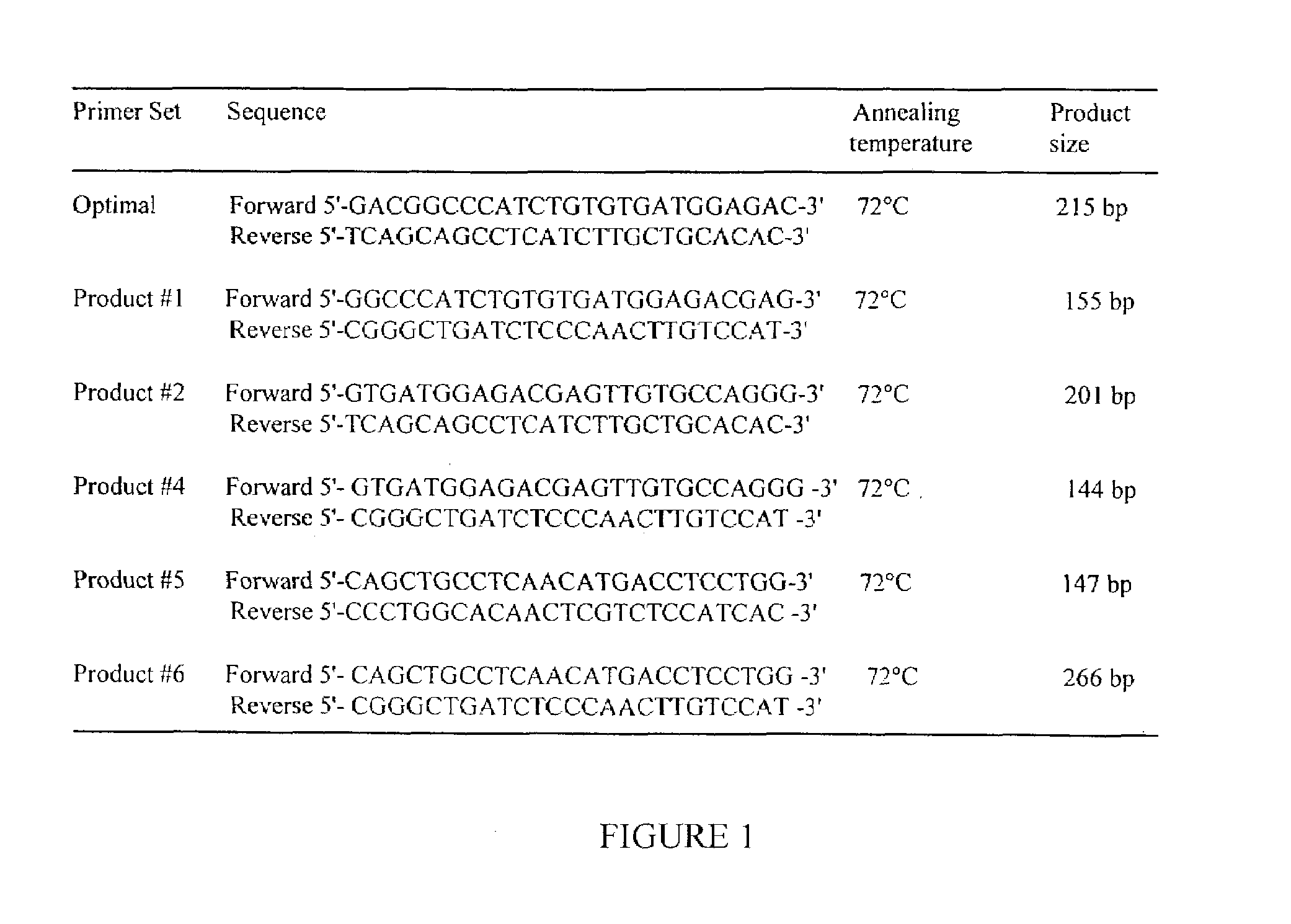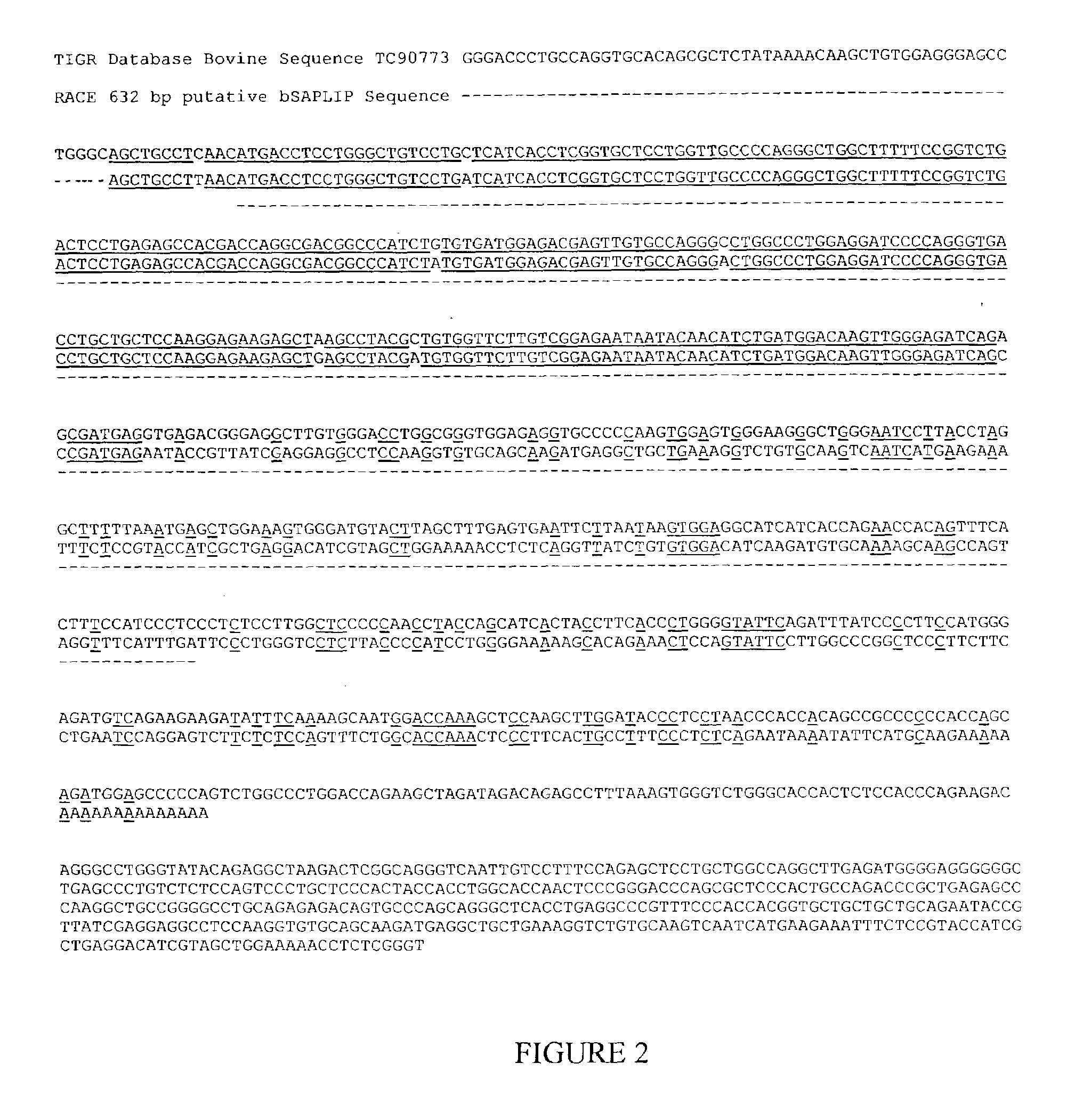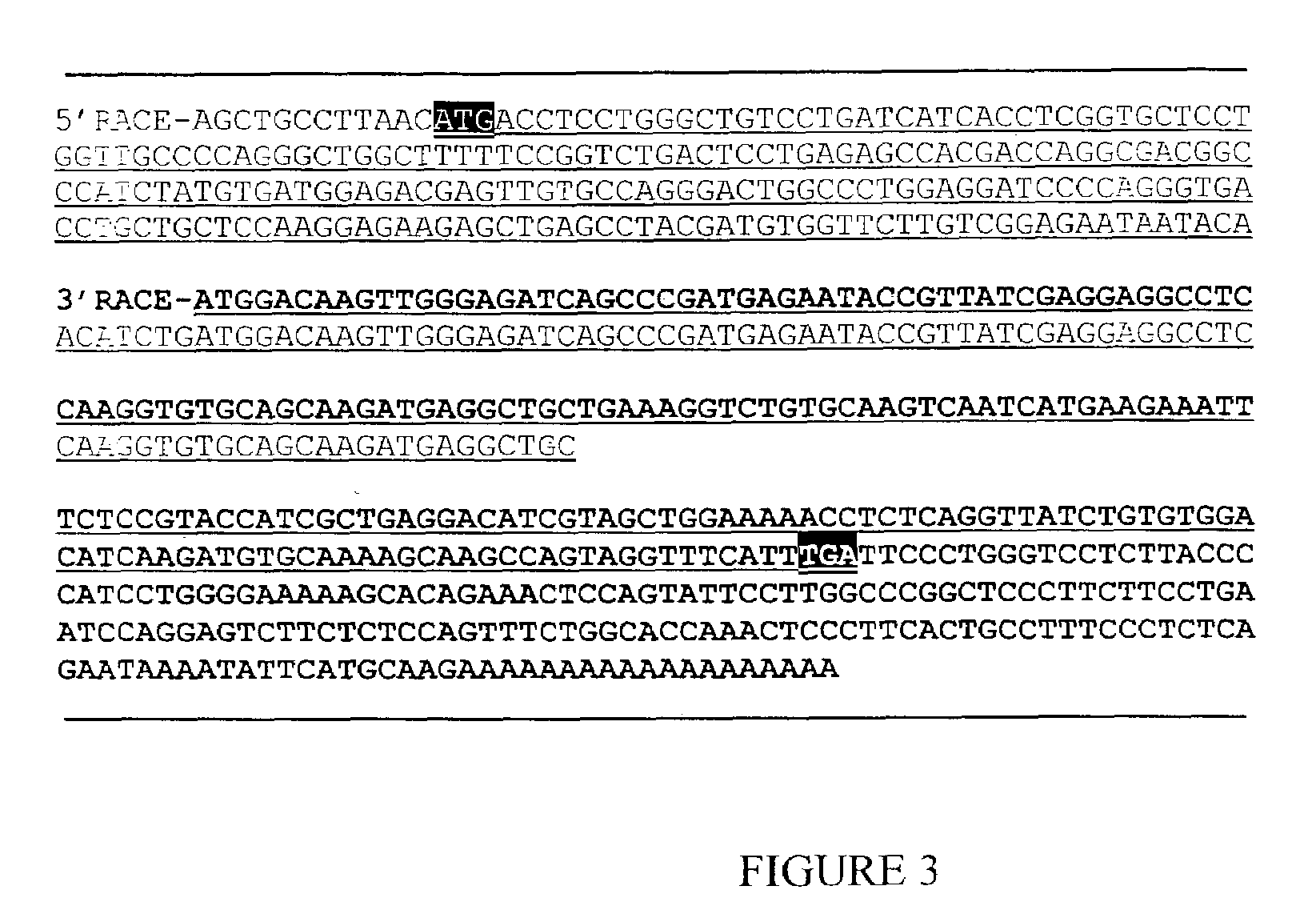Bovine lymphocyte-derived antibacterial protein
a technology of bovine lymphocytes and antibacterial proteins, applied in the field of nucleic acid sequences, can solve the problems of permanent loss of dairy cattle production, affecting the production efficiency of bovine lymphocytes, and reducing milk production
- Summary
- Abstract
- Description
- Claims
- Application Information
AI Technical Summary
Benefits of technology
Problems solved by technology
Method used
Image
Examples
example 1
Isolation of Mononuclear Cells
[0036]Peripheral blood mononuclear cells (PBMC) are collected to serve as sources of bovine lymphocyte RNA. PBMC are isolated from three mid-lactating Holstein dairy cows that are free of mastitis. Whole blood samples are centrifuged in 50 ml centrifuge tubes at 2000 RPM, 4° C. for 30 minutes. The interface layer is removed by pipetting, layered onto Ficoll-Paque (Amersham Pharmacia, Piscataway, N.J., USA), and centrifuged at 1370 RPM, 15° C. for 30 minutes. The buffy layer is removed by pipetting, placed in 20 ml Hank's balanced salt solution (HBSS, Sigma Aldrich, St. Louis, Mo., USA), and centrifuged at 1000 RPM, 10° C. for 10 minutes. Pellets are combined in HBSS. Remaining red blood cells are lysed with distilled and deionized water (ddH2O), followed by addition of 2×RPMI (Roswell Park Memorial Institute medium) and HBSS. Tubes are centrifuged at 1000 RPM, 10° C. for 10 minutes, and pellets are combined and washed 3 times with HBSS containing 2% bov...
example 2
Cell Separation Using Magnetic Beads
[0037]Enriched cultures of bovine NK-like lymphocytes (CD2+ / CD3−) are obtained via magnetic bead separation. Isolated PBMC are incubated for 30 minutes with 200 μl of mouse anti-bovine CD3 (VMRD #MM1A, Pullman, Wash., USA) per 107 cells. The cells are then washed with 1X phosphate buffered saline (PBS)+2% BSA and incubated an additional 30 minutes at 4° C. with 10 μg of goat anti-mouse IgG coated magnetic beads (Miltenyi Biotech, Germany) per 107 cells. The bead cell complex is then extracted from non-complexed cells through the use of a magnetic field (VairoMACS Magnetic Separation Systems, Miltenyi Biotech, Germany) and the CD3− fraction is collected. The cells are counted and the process is repeated, this time labeling the cells with mouse anti-bovine CD2 (VMRD #BAQ95A, Pullman, Wash., USA). The CD2+ / CD3− fraction, containing mainly NK-like cells, is then extracted in the manner previously described.
example 3
RNA Isolation
[0038]Cell cultures enriched for bovine NK-like lymphocytes are resuspended (107 cell / ml) in RPMI-1640 containing 10% fetal bovine serum (FBS, Hyclone, Logan, Utah, USA), 1% antibiotic / antimycotic solution (Sigma Aldrich, St. Louis, Mo., USA), and 1% L-glutaminutese (Sigma Aldrich). The cultures are then stimulated with 100 U / ml of recombinant human IL-2 (Roche Molecular, Mannheim, Germany) for 48 hours and 37° C. Control unstimulated cultures are also incubated for 48 hours at 37° C. After incubation, the cells are washed with HBSS and resuspended (5.0×106 cells / ml) in TRIZOL™ reagent (Invitrogen, Carlsbad, Calif., USA). Total RNA is isolated according to the manufacturer's instructions.
PUM
| Property | Measurement | Unit |
|---|---|---|
| volume | aaaaa | aaaaa |
| volume | aaaaa | aaaaa |
| time | aaaaa | aaaaa |
Abstract
Description
Claims
Application Information
 Login to View More
Login to View More - R&D
- Intellectual Property
- Life Sciences
- Materials
- Tech Scout
- Unparalleled Data Quality
- Higher Quality Content
- 60% Fewer Hallucinations
Browse by: Latest US Patents, China's latest patents, Technical Efficacy Thesaurus, Application Domain, Technology Topic, Popular Technical Reports.
© 2025 PatSnap. All rights reserved.Legal|Privacy policy|Modern Slavery Act Transparency Statement|Sitemap|About US| Contact US: help@patsnap.com



